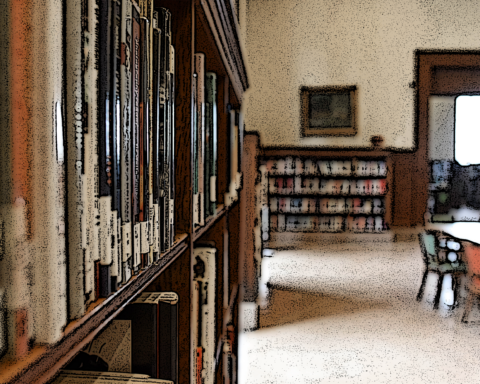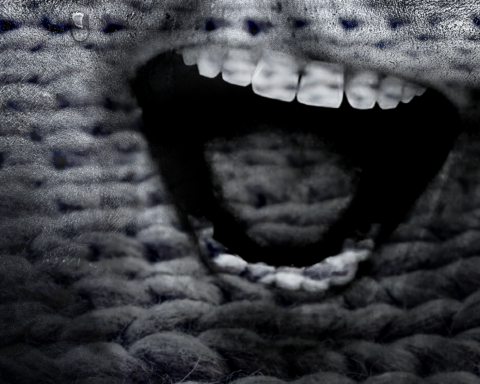“This is going to be bad,” I said to my husband as we watched initial reports of a mysterious illness sweeping through a province in China. “We are going to be impacted by this,” and by “we” it was understood I meant Asian Americans.
This was back in January – before we knew the novel coronavirus and COVID-19, the illness it caused, was already here in the U.S. The unseen “enemy” we were fighting first as a country and then globally already had been giving a face, a caricature.
China. Wet markets. Strange foods, even exotic and most definitely gross. Dirty. Infectious. Intentional.
And instead of photographs from China, news outlets would use images of Asian Americans wearing masks while on public transportation or on the street. The nameless Asian American wearing a mask.
The enemy is us and we live among you.
I was in my car at an intersection waiting for the light to turn and sneezed into my tissue. It was mid-March and an unusual warm front had awoken every allergen in the Midwest. I caught the eyes of the driver across the way. He stared at me. Or was he just staring ahead waiting, like me, for the light to turn green? I drove through the intersection slowly, and he turned his head making eye contact with me, pointed in my direction and yelled something. What had just happened? Had I made that up in my head?
A few days later I was supposed to serve as an election judge for our state’s primary elections. It’s a civic duty I am honored to be able to perform. But as election day approached, allergy symptoms remained and there was a lot of uncertainty around the public health issue.
Hand sanitizer doesn’t kill this novel coronavirus. Don’t wear a mask. Maybe. Maybe wear a mask. Wear a mask if you’re sick. If you’re sick you shouldn’t be out in public. Don’t shake hands. Don’t touch your face. Some symptoms are a fever, sore throat, difficulty breathing.
I was still sniffly and stuffed up. I was sneezing. And I am Korean American. I have the face of the faceless enemy. I decided to call the county registrar and let the office know I would not be able to perform my duties, and it was clear other judges were calling in. The clerk I spoke with was desperate. She told me that if I was feeling better to call no matter what time to let the county know I could serve. I told her that I was an Asian American and that it was in our best interest I not serve. She just reminded me to call back if I had a change of heart. It wouldn’t matter. A change of heart can’t change the fact that I am an Asian American.
It hasn’t helped that the president of the United States has fueled the anti-Asian rhetoric – trying to lay blame on a country instead of another government, instead of taking responsibility for playing down the severity and danger of the virus by comparing it to the flu. Members of his administration calling it the “Wuhan Flu” and comparing the potential peak of the virus to “our Pearl Harbor.”
The comparison to Pearl Harbor was telling, and Asian Americans across the diaspora heard the dog whistle. During WWII, Executive Order 9066 deemed Americans who looked like a particular enemy were forcibly removed from their homes, businesses, and communities and incarcerated with no due process in horse stalls and deserts behind armed guards and barbed wire. This did not happen to Americans of German descent. This happened only to Japanese Americans. There were no protests. No marches to protect fellow Americans. More than 120,000 Americans and legal residents of Japanese descent supposedly remained a threat to national security and were incarcerated. Comparing the impact of COVID-19 to Pearl Harbor reminded Asian Americans that again the enemy had a face. Anti-Asian racism and xenophobia are no recent phenomena.
The recent PBS documentary “Asian Americans” is a five-hour docu-series and a much-needed American history lesson that gives broad strokes and representation in what I would call the myth of the American Dream as it breaks down the myth of Model Minority. We are Asian Americans – American-born, immigrants, refugees, adoptees, multi-racial, asylum seekers, and undocumented. We are more than 20 million people (pewresearch.org) representing more than 20 countries of Asia and India – held together under a socio-political label that declares both our “otherness” and our belonging. That is why I, as a Korean American 1.5 generation immigrant, cringed as news of this novel coronavirus hit the media. Blaming China, no matter how legitimate you may believe that argument to be, morphs rather quickly into “Asian American” because geographical and political differences are not worth identifying and clarifying when you are looking to blame and fight an enemy.
I am not alone in this “feeling” of being targeted and linked to the virus. Dr. Russell Jeung, a professor of Asian American studies at San Francisco State University, recognized it, too. He and two graduate assistants put together an analysis of media coverage of COVID-19, tracking various reports of harassment against Asians and Asian Americans across the country. In March, Jeung and the Chinese for Affirmative Action and Asian Pacific Policy and Planning Council developed a website for people to report, in more than 10 languages, incidents of harassment. So far, more than 1,500 incidents of racism and discrimination related to COVID19 were reported .
It is human nature to want to solve a problem, especially when lives are at stake. What is especially dangerous in this current situation is leaders who continue to point the blame and responsibility at me and people who look like me.
President Donald J. Trump continues to state the U.S. is leading the world in testing. Trump is quoted as saying, “We built the most advanced and robust testing anywhere in the world, and we’ve done more testing than any country anywhere in the world.” Yet, that is just not true. The US has not done more testing than any other country whether it’s overall testing or per capita. Because Trump insists America is winning the testing race, a race that doesn’t actually exist, reporter Weijia Jiang from CBS news recently asked Trump, “Why is this a global competition to you when Americans are losing their lives every day?”
Trump responded, “Maybe that’s a question you should ask China.” Jiang hesitated and then followed up by asking Trump to explain why he had told her specifically to ask China. He went on to claim that he had told her to ask China because “anyone” should go ask China, but again Asian Americans heard the dog whistle loud and clear. Despite the fact that as I am writing this, there are an estimated 1.4 million confirmed cases and more than 86,000 deaths and the president sees Asian Americans somehow responsible for this global pandemic.
I do not know how to change the trajectory of this country’s racism towards Asian Americans, but I do know that I, that we, must stop gaslighting ourselves into downplaying the micro-aggressions and the violence directed against us.
Sheltering in place has meant taking walks outside when possible, trying to anticipate who will make the first move off of the sidewalk when I see other people in the neighborhood. Two friends and I were talking about our experiences as we came upon the fear and delight of seeing other people out and about while staying six feet away. My two friends, white women, mentioned how much friendlier people seemed, almost as if people were going out of their way to smile knowing that the world was under this cloud.
I stayed silent. I have not been experiencing this friendliness but do I bother mentioning this? Do I dampen the tone of this conversation between friends who are trying to encourage one another? “That sounds nice. That’s not been my experience,” I said, hesitating.
“It’s not because your Asian American, is it? It is, isn’t it. That sucks. That’s so wrong,” she said.
You cannot imagine my relief. The discomfort of being in public can’t be erased by her acknowledgment, but it certainly reminded me of the importance of being seen fully – as a human being, equally impacted but also uniquely targeted in this time of life in the time of COVID-19.

Kathy Khang is a writer, speaker, and yoga teacher.
She is the author of Raise Your Voice: Why We Stay Silent & How to Speak Up (IVP, 2018), a contributing editor for Sojourners magazine, the coauthor of More Than Serving Tea (IVP, 2006), and the contributing author to the forthcoming Alabaster Guided Meditations, Psalms Vol. 1 and 2 to be published late-2020 in collaboration between Alabaster Co. and IVP. Currently she is the vice board chair of Evangelicals for Social Action.
Ms. Khang was a newspaper reporter in Green Bay and Milwaukee, WI before spending more than two decades in vocational ministry where she focused on leadership development and training leaders in diversity and justice. She holds a BS in journalism from Northwestern University, Evanston, IL.
She is based in the north suburbs of Chicago and is honored to be mom to three incredible young adults. Ms. Khang blogs at www.kathykhang.com , is on Twitter and Instagram as @mskathykhang, and posts at www.facebook.com/kathykhangauthor .






Unbound Social